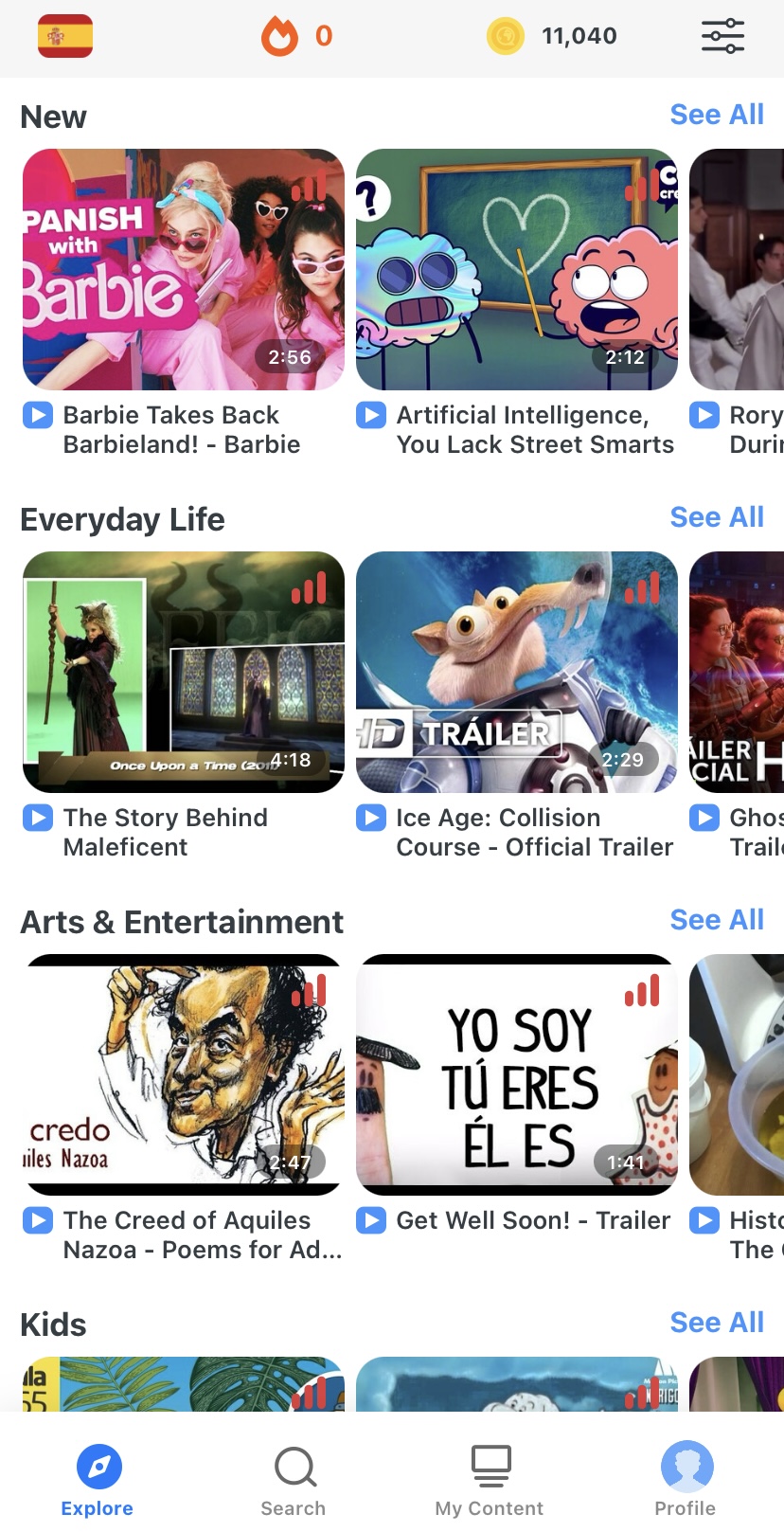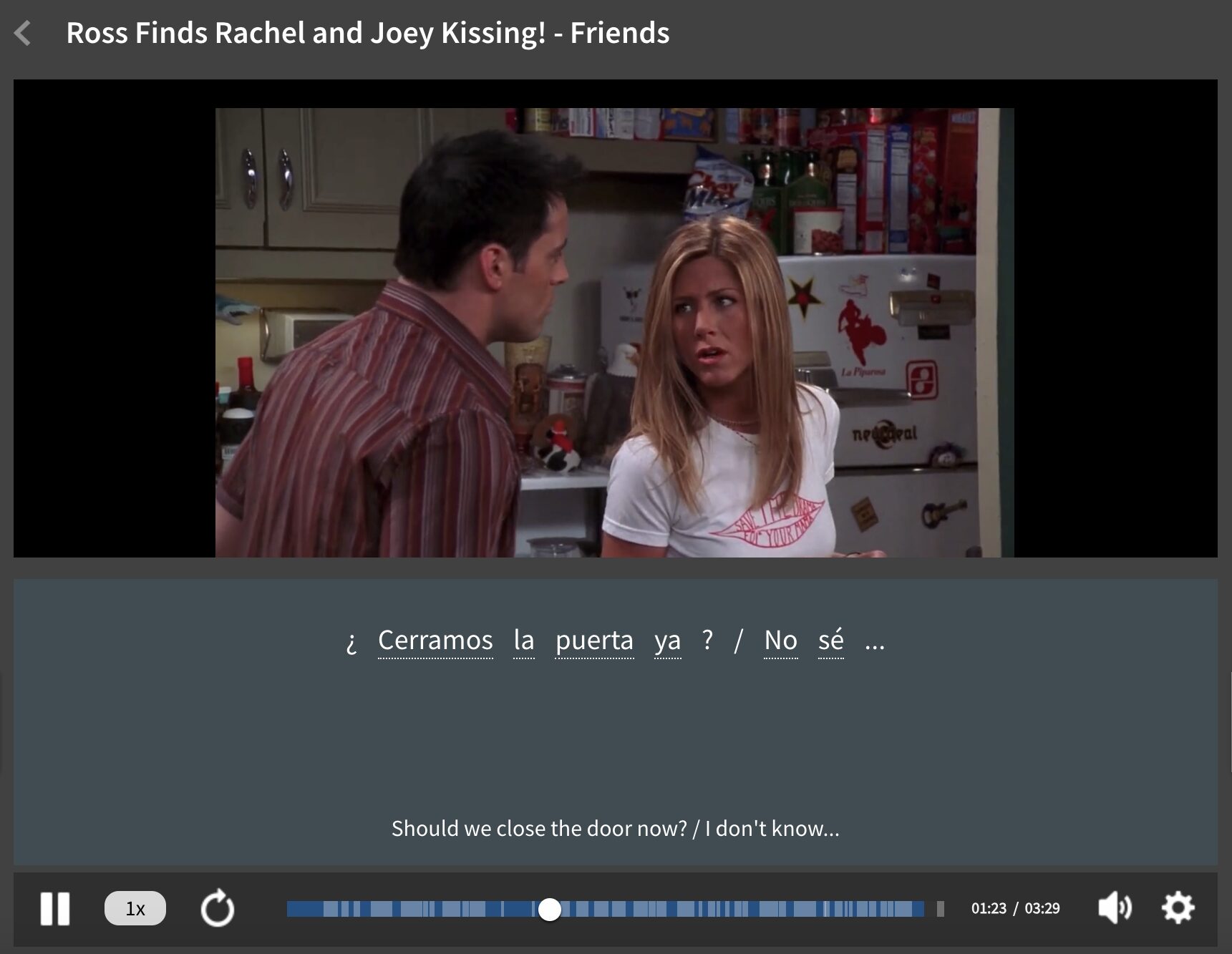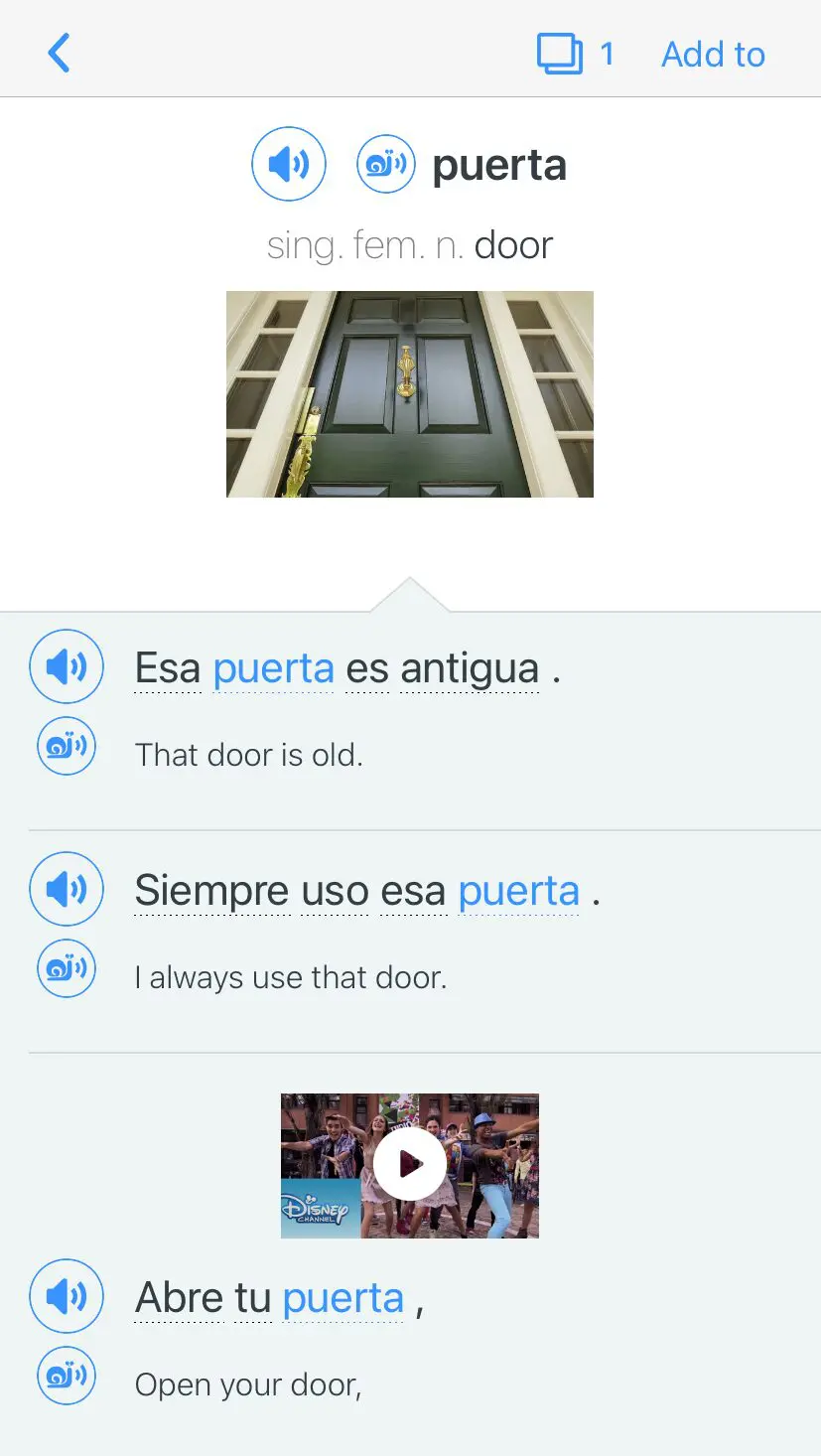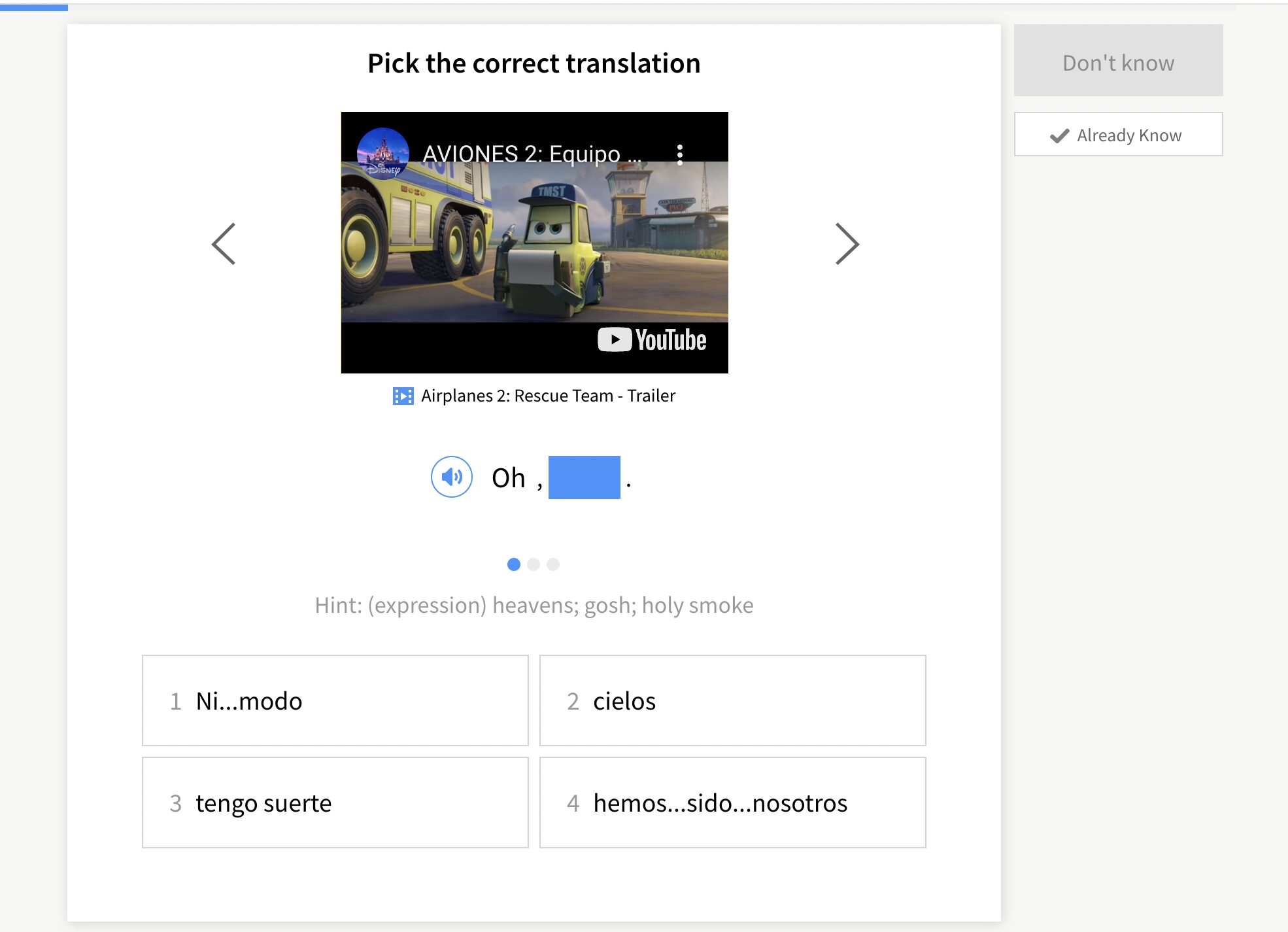Contents
- 1. Learn the 1000 Most Used Spanish Words First
- 2. Focus on Cognates
- 3. Start with Spanish Pronunciation
- 4. Commit to Memory Set Spanish Phrases
- 5. Start Out Talking Like a Kid
- 6. Find the Regular Patterns
- 7. Learn the Irregular Verbs
- 8. Try the Scriptorium Technique
- 9. Use Spanish in Your Daily Life
- 10. Learn Idioms and Slang
- 11. Hone Your Ear to the Sounds of Spanish
- 12. Immerse Yourself in Spanish
- 13. Watch Spanish Movies and TV and Read Spanish Books and Articles
- 14. Find a Language Partner
- 15. Socialize and Interact in Spanish
- 16. Make Vocabulary Lists and Flashcards
- 17. Set Goals for Yourself
- 18. Reward Yourself
- And One More Thing…
Here’s How to Learn Spanish Fast in 2025

Learning Spanish fast takes devotion, practice and a lot of hard work. But that doesn’t mean it can’t also be a lot of fun.
And there are a lot of hacks that language learning experts have discovered over the years.
We asked language learning experts to share their most important tips, tricks and hacks for learning Spanish fast, and we’re going to reveal those here.
Read on to learn the top 18 expert-recommended hacks for learning Spanish as fast as possible! We’ve also covered some of these tips in the video below.
Download: This blog post is available as a convenient and portable PDF that you can take anywhere. Click here to get a copy. (Download)
1. Learn the 1000 Most Used Spanish Words First
If you learn the 1000 most used words in Spanish, you can have basic conversations and generally get by pretty easily in Spanish-speaking countries. Using a language corpus, which is a record of how the language is actually used by native speakers, gives you a pretty accurate idea of which words to focus on first.
According to the Corpus del Español, these are the 25 most used words, so they’re a great place to start:
1. el (the)
2. de (of)
3. que (that)
4. y (and)
5. a (to)
6. en (in, on)
7. un (a, an)
8. ser (to be)
9. se (reflexive pronoun)
10. no (no)
11. haber (to have)
12. por (for, by)
13. con (with)
14. su (his, her, its, their)
15. para (for, to)
16. como (like, as)
17. estar (to be)
18. tener (to have)
19. le (indirect object pronoun)
20. tù (you)
21. yo (I)
22. todo (all, every)
23. pero (but)
24. más (more)
25. hacer (to do, make)
With just these 25 words and a few extra proper nouns, you can say things like:
- Yo soy de Los Ángeles. (I’m from Los Angeles.)
- ¿Tú eres de México? (Are you from Mexico?)
- Yo tengo hacer más por mi. (I have to do more for myself.)
Just think of what you could say with 1000 words!
2. Focus on Cognates
There are over 20,000 cognates between Spanish and English. In case you’ve forgotten what a cognate is, it’s a word that takes a very similar form in both languages.
Examples are:
- Actor — Actor
- Animal — Animal
- Doctor — Doctor
- Elefante — Elephant
- Hospital — Hospital
- Hotel — Hotel
- Influencia — Influence
- Interesante — Interesting
- Nacional — National
- Universidad — University
Now, imagine if you learned just 10% of the 20,000 cognates. This would be another 2000 words in your Spanish vocabulary.
3. Start with Spanish Pronunciation
Put pronunciation right up front in terms of your list of Spanish learning priorities. One method I particularly like is watching authentic Spanish language videos.
A program I love for this is FluentU, which takes video clips from authentic Spanish media and turns them into personalized language lessons.
Every video comes with a downloadable transcript, interactive subtitles, a personalized vocabulary quiz and other useful learning tools so you can build your language skills as you watch.

The vocabulary words used in the video clips come with example sentences, and you can listen to the audio pronunciation of both the word and the sentences at normal and slow speeds to perfect your pronunciation.
4. Commit to Memory Set Spanish Phrases
Set phrases are phrases that you can use a lot. If you have a fair amount of these in your arsenal, you’ll be able to negotiate pretty much all of your daily interactions. Sure, you can’t discuss philosophy with these, but you can easily order a meal, pick up your laundry and crack a joke with the local fruit seller.
Here’s a list of some handy set phrases to start with:
- Hola, ¿cómo estás? — Hello, how are you?
- ¿Dónde está el baño? — Where is the bathroom?
- ¿Cuánto cuesta esto? — How much does this cost?
- Por favor, gracias — Please, thank you
- Lo siento — I’m sorry
- ¿Puedes ayudarme, por favor? — Can you help me, please?
- No entiendo — I don’t understand
- ¿Cuál es tu nombre? — What is your name?
- ¿Cómo se dice … en español? — How do you say … in Spanish?
- ¡Salud! — Cheers!
5. Start Out Talking Like a Kid
You don’t need to learn the advanced verb tenses to get by perfectly fine in Spanish. If you’re going for speed, I suggest skipping them altogether. You can always pick them up later once you’re basically fluent.
So stick to the present tense if at all possible. Instead of using the future tense, use simple constructions like voy a comprar comida mañana (I am going shopping for food tomorrow).
And talk to kids, too, if you can. When I spent a summer volunteer teaching in Costa Rica, I came home with more Spanish than I’d ever had before from spending so much time with kids. They don’t judge and their level is much lower, so you can have actual conversations almost right away.
6. Find the Regular Patterns
Spanish, being a Romance language, is full of regular patterns, which should use to your advantage when you’re on your path to learning Spanish fast.
For example, –ar verbs almost always are conjugated the same way. So don’t fret about exceptions, just use the -ar verb endings and hope for the best. Most of the time, you’ll be right.
7. Learn the Irregular Verbs
Even though experts recommend finding and sticking to patterns, there are a few major verbs that just have to be memorized because they’re irregular.
If you get these down quickly, you’ll have access to a lot more highly useful verbs. That’s because the top five most common irregular verbs in Spanish are also five of the most used verbs.
The most common irregular verbs in Spanish are:
- Ser (to be) is irregular in all forms: soy, eres, es, somos, sois, son
- Estar (to be) is irregular in the present tense: estoy, estás, está, estamos, estáis, están
- Ir (to go) is irregular in the present tense: voy, vas, va, vamos, vais, va
- Tener (to have) is irregular in the yo form of the present tense: tengo, tienes, tiene, tenemos, tenéis, tienen
- Hacer (to do/make) is irregular in the present tense: hago, haces, hace, hacemos, hacéis, hacen
8. Try the Scriptorium Technique
The Arguelles’ Scriptorium Technique, which involves writing and speaking, involves three basic exercises:
1. Read a sentence out loud.
2. Say each word aloud again as you write it yourself.
3. Read the sentence aloud as you have written in.
That’s it! But it works, according to research. It’s also a great way to memorize texts and new vocabulary.
9. Use Spanish in Your Daily Life
Beyond roommates and apps, you can incorporate Spanish practice into your daily life in other ways to help you achieve fluency faster.
- Change your phone settings to Spanish. You’ll have no choice but to practice when you use your phone. By changing your settings to Spanish, learning will be natural and easy. Chat with Siri to get extra speaking and listening practice!
- Keep a Spanish journal. You can write as little as 3-5 minutes every day. Write about something cool or crazy that happened to you that day, something that you’d like to remember, or something you’re looking forward to.
10. Learn Idioms and Slang
Fast learning doesn’t have to be dull if you focus on some of the fun parts of Spanish vocabulary. Aren’t we all more enthusiastic about grabbing the interesting parts of speech than we are about pulling “basic vocabulary” into our skill set?
The necessary foundational vocabulary and grammar will follow in time. I speak from experience here. Fun signals adventure, and adventure draws us in every single time, so think outside the box and let yourself have some fun!
Learn slang and use it as quickly as possible. If you want to learn from Spanish slang from around the world, check out this post:
Common Spanish Slang from Around the World (Audio Included) | FluentU Spanish Blog
Spanish slang is your key to sounding like a native. And with 291 Spanish slang words and phrases, you’ll be able to fit in with any Spanish speaker! This post shows you…
11. Hone Your Ear to the Sounds of Spanish
If you don’t listen to spoken Spanish, it’ll be harder to perfect your pronunciation and accent.
There are easy ways to do this:
- If you’re not ready to dive into Spanish movies and soap operas, start by watching your favorite TV shows in Spanish. You can improve your listening comprehension and your reading skills by watching with Spanish subtitles, forcing you to think solely in Spanish.
- Turn on a Spanish TV channel or radio station. Listening to native speakers will improve your understanding of Spanish as well as relevant current events.
- Download some Spanish podcasts. There are so many options to choose from on iTunes and Google; look for ones with high ratings or good reviews.
- Listen to Spanish music. Download the lyrics and sing along!
By listening to Spanish as often as possible, you’ll pick up the rhythms of the language and internalize grammar and vocabulary.
Here are some more resources for listening practice:
- KeRapido for improving your Spanish accent and pronunciation of tricky sounds in Spanish.
- Gritty Spanish for entertaining Spanish dialogues, with a specific focus on learners who want to pick up Spanish quickly. Read our full review here.
- SpanishListening for listening activities featuring speakers from many Spanish-speaking countries, helping familiarize you with regional accents and vocabulary variations.
- Spanish Resources for listening activities, worksheets and quizzes.
12. Immerse Yourself in Spanish
Whether abroad or from the comfort of your home, research shows that immersion is the quickest way to learn Spanish.
“Immersion” involves surrounding yourself with and using your target language as much as possible.
For in-country immersion:
- Stay with a host family abroad. Living with a local family is a great way to speed up your learning process and experience the country’s culture. Programs such as Lingoo or Enforex offer host family options.
- Work in a Spanish-speaking environment. Volunteering or working in Spanish-speaking countries will allow you to immerse yourself in Spanish language and culture. To find opportunities, take a look at Work Away.
- Do a course in a Spanish-speaking country. From wine tasting in the vineyards of La Rioja, Spain, to photography lessons in Buenos Aires, the possibilities are endless!
For immersion at home:
- Use Spanish immersion programs. They’re designed to get you thinking in Spanish and practicing consistently.You can also use the FluentU Spanish YouTube channel, which has in-depth video lessons using Spanish dubbed episodes of popular TV shows, like “Friends.”
FluentU takes authentic videos—like music videos, movie trailers, news and inspiring talks—and turns them into personalized language learning lessons.
You can try FluentU for free for 2 weeks. Check out the website or download the iOS app or Android app.
Click here to take advantage of our current sale! (Expires at the end of this month.)

- Live with a native speaker. Living with a native speaker is a great way to speak Spanish on a daily basis.
- Practice Spanish during your free time. Click here to look at the best apps to use to learn Spanish in 2023.
13. Watch Spanish Movies and TV and Read Spanish Books and Articles
You’re bound to learn Spanish quicker if you enjoy studying. But once you get the basics down, delving into the nitty-gritty can seem boring or frustrating.
Fortunately, it isn’t hard to make learning fun so you can get your motivation back up! The same things you enjoy in your downtime can be great learning tools.
- Try watching movies in Spanish to boost your comprehension skills.
- Advance your reading level with a heart-stirring Spanish novel (or an old favorite translated into Spanish).
- Keep up with current events and learn about issues affecting the Spanish-speaking world.
And what’s more fun than games? Playing games can be a great way to practice your Spanish and learn new vocabulary.
RockALingua and 123 Teach Me provide game options at different levels. When one level is mastered, you can begin playing slightly more difficult games.
While technology is ideal for language games, don’t discount old school favorites. Card games, like Uno or even poker, can be made into Spanish language lessons as long as conversation and play is done exclusively in the target language.
Even board games can have a place in your Spanish studies. Try Scrabble Spanish (love this one!) and KLOO.
Here’s a great Spanish language travel vlog to get hooked on:
14. Find a Language Partner
Speaking Spanish daily with another learner or a native speaker will definitely improve your language skills.
Speaking forces us to think quickly to not only understand what our conversation partner is saying but also how to respond.
Whether you’re living abroad or at home, it’s likely there are conversation classes or intercambios (conversation exchanges) that will give you plenty of opportunities to practice your Spanish.
- Use MeetUp to sign up for events and meetings happening in your area so you can practice Spanish in person.
- Conversation Exchange will help you find a Spanish conversation partner.
- Zoom brings learners together no matter where you are. An ideal method for speaking in real time with another Spanish speaker.
- Find a language partner through the Couchsurfing community. A social network for travelers, it will help you find others on the road who may be looking to improve their Spanish skills as well.
- Converse with a group of Spanish speakers on LingQ. From group conversation lessons to one-on-one lessons, I’m sure you’ll find the method that works best for you.
- Meet other Spanish speakers in Facebook groups. This is a great way to find conversation groups that already exist around the world or more locally.
Whether you’re meeting someone for a coffee or a glass of vino, you’re bound to build up your vocabulary quickly, as well as that all-important confidence.
15. Socialize and Interact in Spanish
An ideal way to practice Spanish is to make friends who speak Spanish! It might be easier to do this while living abroad, but with some research, you can likely find similar activities near home too.
- Find people with the same hobbies. Is there an activity you enjoy that you do regularly? Take a class in Spanish related to your favorite activity. You can practice something you like while also communicating with others in Spanish.
- Only socialize in Spanish—especially if you live abroad. If someone speaks to you in Spanish and realizes it’s difficult for you to understand what they’re saying, they’ll usually switch to English. But if everyone keeps switching to English, how will you ever progress? Say that you need to practice your Spanish skills, and then do it. Don’t switch to English when someone else does; continue answering in Spanish.
- Go on dates in Spanish. If you’re single and looking for love, why not combine that search with your quest to learn Spanish? Yes, dating can already be daunting, but if you end up meeting someone interesting (or even the person of your dreams!) it could be your ticket to some fast track learning. Start by acquiring some Spanish conversation starters, restaurant vocabulary and romantic phrases to impress your date.
16. Make Vocabulary Lists and Flashcards
Since only you know what words and phrases you’re inclined to use often, making your own vocabulary lists is an excellent way to ensure you focus on those words and learn them quickly. You won’t be wasting time on words you already know or that you’re unlikely to encounter.
Jot down any words or phrases you think would be useful to you. You can even brainstorm to think about the words and phrases you use most often in English to find their Spanish equivalents.
Meanwhile, while you’re reading, watching or listening to content in Spanish, take note of any unfamiliar words or phrases and add them to your lists.
Once you have your vocabulary lists ready to go, keep them handy to study during any spare minutes of your day. This will ensure that you’re making the most of your Spanish practice and retaining new words, so you can boost your vocabulary as quickly as possible.
I recommend either making your own cards on index cards or using an app like Memrise, which lets you make your own sets of online flashcards, or use sets that others have already made.
17. Set Goals for Yourself
To learn Spanish quickly, set SMART goals.
SMART goals are Specific, Measurable, Attainable, Relevant and Timely.
Here’s an example of what one of your goals might be and why it’s a “SMART” one:
Goal: I will learn 30 new Spanish words or phrases every two weeks. I will do this by watching Spanish videos for one hour each day. I will jot down words and phrases that interest me. I will only speak Spanish in the evenings and incorporate new vocabulary into my speech.
- Specific: Make sure your goal is specific, e.g. 30 new words every two weeks.
- Measurable: By writing down your goals, you’ll be able to measure how close you are to meeting your goal. If you see that you only learned five new words after one week, you’ll know that 30 might be a little too overwhelming.
- Attainable: 100 new words a week isn’t doable, but 30 new phrases in two weeks is.
- Relevant: Your reason is your motivation. Knowing the reason behind your goal will make you work that much harder to achieve it.
- Timely: Put a realistic deadline on when you hope to achieve the final result.
18. Reward Yourself
Make rapid-learning Spanish a short-term “employment” gig. Even if you make your Spanish learning as fun as possible, it’s still hard work! And, like any work, you deserve to be compensated and rewarded for it. Right?
Establishing incentives is a good way to nudge yourself into establishing and maintaining behaviors. Plus, it can encourage you to study regularly (so you can get your reward regularly!).
- If you have the funds, try setting up a system of monetary compensation. Decide how much it’s worth to learn Spanish quickly, and then put the funds aside. It’s a great incentive to know the cash is waiting for you.
- A reward can be anything. Treat yourself to some dessert at the end of a week of learning. Add five minutes to your evening walk for every hour you study. Put aside your really exciting book or TV show and don’t continue it until you’re done with your studies. Anything that you look forward to can be used as an incentive to study hard!
Don’t make the goal? Don’t beat yourself up over it—but don’t pay yourself, either. Donate the money that was waiting for you to charity, instead. That book or show will just have to wait until you finish your work!
Learning a language can take time, but finding the best method for you will put you on the track to success!
Try out these methods and find out which one works best for you.
Download: This blog post is available as a convenient and portable PDF that you can take anywhere. Click here to get a copy. (Download)
And One More Thing…
If you’re like me and prefer learning Spanish on your own time, from the comfort of your smart device, I’ve got something you’ll love.
With FluentU’s Chrome Extension, you can turn any YouTube or Netflix video with subtitles into an interactive language lesson. That means you can learn from real-world content, just as native speakers actually use it.
You can even import your favorite YouTube videos into your FluentU account. If you’re not sure where to start, check out our curated library of videos that are handpicked for beginners and intermediate learners, as you can see here:
FluentU brings native Spanish videos within reach. With interactive captions, you can tap on any word to see an image, definition, pronunciation, and useful examples.
You can even see other videos where the word is used in a different context. For example, if I tap on the word "puerta," this is what pops up:
Want to make sure you really remember what you've learned? We’ve got you covered. Practice and reinforce the vocab from each video with learn mode. Swipe to see more examples of the word you’re learning, and play mini-games with our dynamic flashcards.
The best part? FluentU tracks everything you’re learning and uses that to create a personalized experience just for you. You’ll get extra practice with tricky words and even be reminded when it’s time to review—so nothing slips through the cracks.
Start using the FluentU website on your computer or tablet or, better yet, download our app from the App Store or Google Play.
Click here to take advantage of our current sale! (Expires at the end of this month.)












